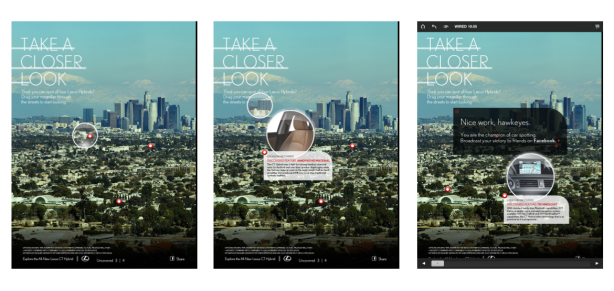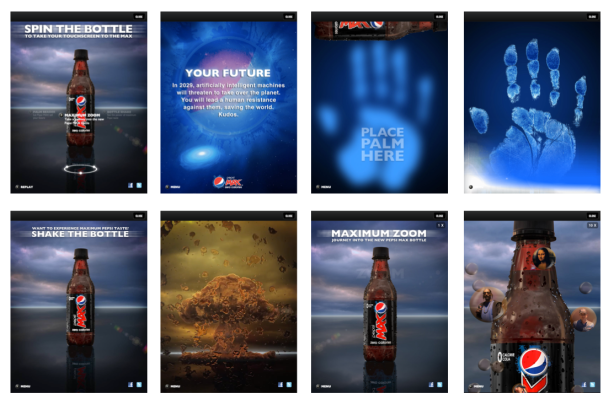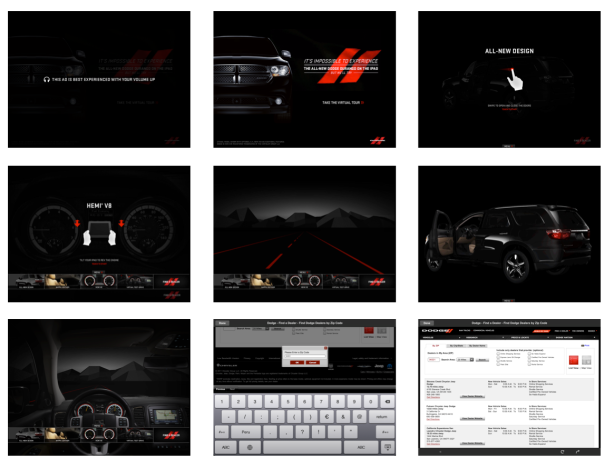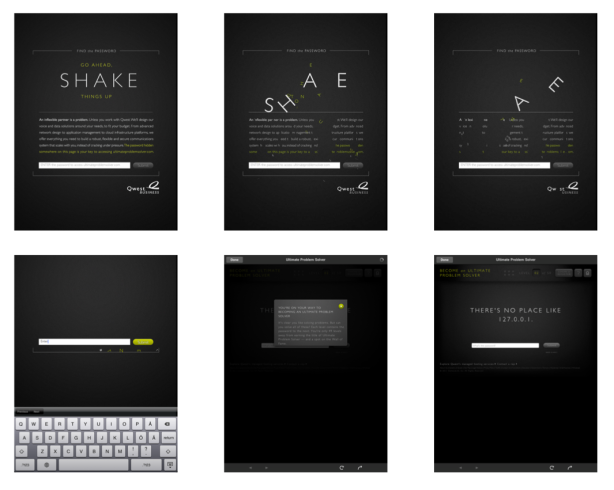Archive for December 2011
Interview with Juuso Myllyrinne, Executive Director, Digital Strategy at TBWA
Interviewee: Juuso Myllyrinne, Executive Director, Digital Strategy at TBWA, New York
What is advertising in eReading and tablet context?
According to Myllyrinne, eReading and tablet media is no new phenomenon but, rather, a novel mixture of mobile and online advertising. Thus, it is no longer necessary to talk about sheer eReading or tablet advertising since technological devices are resembling one another to a greater extent. Ultimately, it is presumable that need for distinct categorization is to diminish and all reading-orientated devices and computer-like tablets are seen as a single medium. On the other hand, it is noteworthy that there are several device manufacturers and each device has its own characteristics and purposes of use. For instance, the size of the screen is to somewhat determine the advertising possibilities of a certain device.
What are the strengths and weaknesses of tablet advertising in comparison to other advertising forms?
A clear strength is that tablet media combines the strengths of both mobile and online advertising. For example, the devices know continuously where the user is located geographically. Another distinct advantage is that the device has a big and portable screen that offers various opportunities. In terms of tablet advertising it is interesting to see what kind of devices (i.e. size and purpose of use) will be popular in future. These kinds of device characteristics that are associated with consumer choices and habits have an impact also on how advertising evolves in the field. Eventually, companies ought to understand consumers’ usage habits and adapt advertising accordingly.
Is tablet medium seen as an opportunity or threat from the viewpoint of publishers and owners of advertising media?
Advertising business is relatively small currently in the tablet context; companies have been forced to cut down prices massively and click-based pricing has not brought about any distinct benefits to companies that operate on slim margins. Fundamentally, companies need to focus their advertising efforts more effectively and search answers to important questions, such as how to increase the sales or turnover of advertisers.
Will tablet medium be a prominent advertising media in future?
Myllyrinne states this is not something that is being actively deliberated but, rather, currently tablet media is seen as an advertising media among others. It is central to consider what can be learned from mobile advertising.
How does advertising planning and execution in tablet media differ from other electronic media?
Tablet media does not much differ from mobile and online advertising. From a process perspective, it is easier to start building tablet advertising to a smaller device and thereon increase the size format step by step towards bigger devices. Generally, it has been more straightforward to start advertising planning from the viewpoint of mobile advertising that customize online marketing to a smaller format. Furthermore, there is not a similar understanding of the possibilities of touch screens in the field of online advertising. Even if there are various devices and each device has their own physical and technological limitations, large advertising agencies still have functional processes for advertising planning in different device platforms. Basically, ads should support different devices. This, in turn, is possible only if the characteristics of each device are taken into consideration from start.
Has this kind of new medium brought about new challenges from advertising agencies’ viewpoint?
Myllyrinne sees that this has not happened. The greatest challenges have already been solved with regard to smart phone advertising where, for example, touch screens and lack of keyboards brought about new challenges and opportunities. A lot has been learned from mobile advertising and this know-how has been utilized in the tablet context.
How is advertising effectiveness measured in tablet context?
Distinct and functional analytics tools exist. Hence, measuring advertising effectiveness is not a challenge. For example, Apple has a service, iAD, that measures advertising effectiveness and offers reports on the data. Additionally, Google has its own analytics services.
What kind of opportunities does tablet medium offer for location-based advertising?
Fundamentally, location-based advertising can be understood through a 2×2 matrix where one axis depicts the physical location of a consumer with regard to advertised products (i.e. close by vs. far) and the other axis portrays the timely relevancy of advertised services with regard to consumption (critical vs. non-critical time). For instance, it is not relevant to advertise a breakfast service at lunch time and so on. As a clear advantage in location-based tablet advertising Myllyrinne sees that the tablet knows a lot of the surrounding situation, such as weather or temperature. In addition, tablets can collect a great amount of consumer information knowing their preferences, such as taste in music or where the consumer likes to spend time. These kinds of variables carry a vast potential for location-based advertising.
Does tablet medium offer possibilities for tactical price and discount advertising?
Myllyrinne says yes; tablets enable tactical price advertising and the underlying idea is that tablet medium should enable all forms of advertising, such as the situation is in other advertising media. It is essential that each media vehicle and their nature is consistent with advertising – in other words, advertising should be consistent with the media product.
How does affiliate marketing fit in tablet medium from the viewpoint of newspaper and magazine publishers?
In a technological sense, there’s no reason why one should not to utilize affiliate marketing in tablet context. As it is, there are already functional processes for this from the behalf of device manufacturers; for instance, iAD enables affiliate marketing processes. Furthermore, Myllyrinne sees no prominent obstacle in why consumers would not like products that could be purchased inside a magazine. Yet, it might be wise to inform consumers about this kind of advertising in newspapers or magazines. Moreover, newspaper and magazine publishers should take into consideration general journalism ethics and guidelines that determine how commercial and editorial content are to be distinguished from each other. Other than that, processes are ready for affiliate marketing.
How is advertising applied in electronic books?
Myllyrinne states that advertising in books may be seen as somewhat awkward from consumers’ viewpoint. Electronic reading resembles physical reading to a great extent and this kind of reading does not involve any kind of advertising. Nevertheless, it is possible that new advertising innovations, that benefit readers, are introduced in the context of online reading. For example, it is possible for a consumer to read a certain book for free when a reader has been exposed to a particular amount of ads. Amazon Kindle has taken advantage of this kind of advertising and offers consumers with an ad-centered e-reading device for a cheaper price. Eventually, books do not represent an impossible target medium from the viewpoint of advertising.
Engaging Advertisements
Engaging ads are very online ad-like by nature. These highly interactive ads contain a lot of multimedia and are often built around a certain engaging element, such as a game or other similar activity (Appendices 53, 54, 55 and 56). In contrast to online advertising, engaging advertisements can utilize a haptic element. In order words, consumers may touch or manage the ad physically. The haptic elements, essentially, not only take advantage of the possibilities in touch screens but also utilize the tilt and shake recognition of tablets (Appendix 56). Fundamentally, these kinds of engaging ads are a clever combination of entertainment and online gaming.
A car manufacturer’s advertisement in Wired magazine (Figure 53) enables readers to touch and browse the ad. The basic look and feel of the ad is pretty static but what makes this advertisement engaging is that it has several hidden hotspots that contain more information about the advertised product. This “hidden” content can be found when different parts of the ad are tapped by finger. The ad is somewhat similar to a mobile game where a player tries to attain new achievements. This kind of ad may capture readers’ attention by invoking their curiosity. Even though the content of the ad may not be relevant to all readers, the format of the ad may still be inviting and challenging.
Pepsi’s ad in the Daily (Figure 54) is a combination of touchable elements and playfulness; a reader can, for example, try to explode a Pepsi bottle by shaking it or even see to his/her future by placing his/her palm on the ad. This kind of ad entails also an ability to engage readers and induce them to spend more time with the ad. As the ad has several sub-pages and functionalities, a reader may want to browse what else can be found in the ad.
Dodge’s ad in Wired (Figure 55) is also a highly dynamic and playful example of engaging ads. The ad is a combination of touchable elements and tilt recognition. A reader can, for example, open or close car doors. In addition, one can listen to the sound of the engine by tilting the tablet device up and down. Even further, the car can be taken to a “test drive” and the steering wheel can be turned by turning the tablet device. Even though the ad contains several engaging elements, the main message of the ad is that one can not experience the real Dodge car just by playing with an iPad. Therefore, a reader is advised to fill his/her contact information so that the car dealer can invite him/her to a test drive.
In this Wired magazine ad (Figure 56) the level of engagement has been taken to the extreme. The basic look and feel is static but after shaking the ad (i.e. tablet device) the ad starts to collapse. Then the ad transforms into a mystery solving game that consists of 50 different riddles. In each riddle, there are certain cues in the ad that can be used for problem solving. In order to pass all the riddles, a reader may have to spend hours (even) with the ad. It becomes evident from the top-score list of the ad that many people have actually passed the riddles of the ad and, thus, spent a long long time engaged with service.



